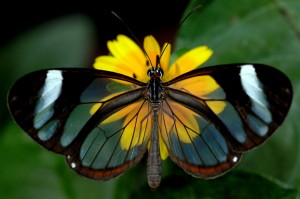I am working on a mystery. A who done it, of sorts. The investigator, yours truly of course and the antagonists are two invasive shrubs. These shrubs have been colluding with co-conspirators to spread their seed and take over the world. But who would agree to aid and abet these dastardly shrubs in their wicked plan? This is at the heart of one of my research questions.

So what the hell am I talking about? Well first, let me take the time to introduce you to my research and provide you with an example. My dissertation is focused around dispersal “strategies” of two viburnum species, Viburnum dilatatum and Viburnum sieboldii. Within the last 30 years these two ornamental species have escaped cultivation and have invaded forest understory in New York, New Jersey, and Pennsylvania along with several other states in the Mid-Atlantic Region. It is important to understand the potential for invasive species to spread, especially for land managers who have to deal with the consequences of finding these shrubs on their doorstep. My goal is to explore the mechanisms and patterns of their spread to determine if the two congener shrubs have similar or different dispersal strategies when invading communities.

You may ask yourself how can plants have strategies? Take this for example: if both species fruits ripen by fall but birds consume one species fruit during the fall migration, while the other is consumed in winter by local birds, the first species has the chance for long distance seed dispersal where the other doesn’t. So how is this a plant strategy if the birds are doing all of the work? Well, a lot of that depends on the fruit’s traits. If one species fruit has high energy content, that may be more appealing to a bird than a fruit with low energy, especially during fall migration when birds need to make the long journey to wintering grounds.
Now lets go back, way back, before these shrubs even bear fruit, back to those dastardly shrubs and their co-conspirators. At that point it is all about pollination. How do they successful pollinate? Most of our knowledge about how these ornamental viburnums are pollinated comes from horticultural text. They say that these viburnums require a conspecific viburnum be located nearby to cross-pollinate by either wind or insect-pollination. However, this tells us very little of what is happening in the real world, especially when you consider that these species are non-native and may not have conspecific viburnum nearby or a pollinator to assist in cross-pollination. To me, this begs the question of who done it? If they are mostly wind-pollinated the answer may be that are they crossing with other ornamental viburnums or perhaps hybridizing with native viburnum? What if they are insect-pollinated? Are native or non-native insects assisting in pollinating these shrubs? Are they robbing other native shrubs of their pollinators? Can they self-pollinate? If so, how viable are the offspring? All these questions and more is what I want to know. I am interested in how the pollination requirements for these species have produced viable seeds that have allowed them to escape cultivation.

This spring I have set up an experiment to address some of these questions. I am using pollination exclusion bags to help me understand pollination requirements. Pollinator exclusion bags, as their name implies, exclude potential pollen sources from the flower. There are two types of pollinator exclusion bags, one to keep out all sources of pollen and pollinators (wind and insect) and another that just keeps out all insects. The idea is to figure out if these species can self-pollinate or require wind-pollination or insect-pollination. These exclusion bags, along with an unaltered flower will allow me to make these distinctions. In addition to this experiment, I am also conducting point count surveys to observe which pollinators visit the flowers and transport the pollen. In order to determine what pollination mechanism yields the most fruit I need to count the number of florets on each flower and compare that to the number of fruit produced after the flowers senesce. This will let me know how many flowers have been pollinated according to the treatment.

However, just because they have set seed does not mean they are viable. In order to determine seed viability I need to harvest the fruit from my experiment in the fall when they are fully ripen and then use a stain to determine whether seeds are viable or not. If the seeds are viable then they will stain the seed red but if they are not viable the seeds will not stain. This will give us some indication of what is the ideal method for pollination to produce viable seed.

However, seed viability ratios do not equate to germination ratios. In many cases, seed viability can be very high but overall germination rates can be very low. This matters when trying to determine the invasibility of the each viburnum species offspring. So, what is the next step? A germination experiment of course! Although, this story will have to wait for another time.


